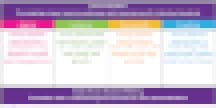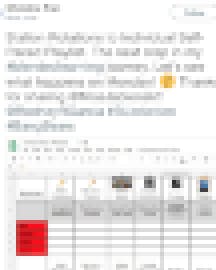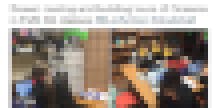When I first began blending digital and face-to-face learning, it was easy enough to create a flow between online learning spaces and offline learning. However, I noticed that sometimes my students were not getting as much out of the digital learning platform as I had anticipated. This was especially true when students could rush through their tasks, consuming content without real understanding or application of learning. Instead of trying to learn, they were racing to be done.
As I work with teachers in my current role with LINC, which provides training and support to schools making changes, I see many of them struggling with the same issue. They have set up beautifully organized station rotations, but often students are all doing the same activities, and the challenge of rigorous and standards-aligned learning remains much the same as my own experience.
This situation reflects the limitation of a models-approach to blended learning implementation. While models have been pivotal in helping teachers implement blended practice, a hyper focus on their individual components, or one model over another, can obscure the big picture. In the case of blended learning, it is easy to get the model right and entirely miss the targeted outcome.
While models precisely outline classroom design they do not inform alignment with learning outcomes or the means of personalized assessment beyond adaptive tools. Thus, the same model can produce a student-centered classroom focused on personalized pathways, agency and strong teacher-student mentorship...or a teacher-centered classroom with marginal differentiation and learning that amounts to little more than digital fluff.
Shifting Focus at the Start
To get classroom transformation right, we need a different framework for assessing the effectiveness of blended learning. Understanding and implementing a model is a step toward transformation but one that must be followed by many others in an ongoing, iterative practice. In short, we need to go back to the basics.
In the dawning days of blended learning, early trailblazers had no models no work from. Teachers were using technology as a means to increase engagement by giving students more control over the direction of their learning. They used the online environment to help them differentiate learning and gain more one-on-one time with students. To accomplish this, they had to change they way they facilitated learning, holding themselves less accountable for controlling a lesson start to finish and more accountable to these big-picture goals.
As school leaders, we can start by creating a culture of trust, collaboration and growth mindset, or what we call a culture of generativity. Teachers are then empowered as learners who regularly engage in self and shared reflection. From there, we can explore the models as a stepping stone to personalized learning and make space for iterative practice by encouraging teachers to tinker with tools within a model that feels comfortable as a starting point. This will be unique to each teacher.
A New Framework
To enable a mindset over models mentality, we need to ensure teachers can build capacity in the hallmarks of effective blended practice, outlined in “Blended Learning in Action,” a book I co-wrote. These hallmarks comprise the acronym PAACC for a quick big-picture awareness guide superseding any one particular model of blended learning.

PAACC focuses on personalization, agency, audience, connectivity and creativity. By aligning lessons and project units to the this framework teachers can implement a model or combination of models with the confidence that they are hitting the personalization target. In this alignment process, teachers routinely ask themselves the following questions:
Personalization
What is the ratio of whole group learning (same objective) to individualized? Do my students have personalized paths for where they are? How am I regularly assessing where students are through a combination of data and conferencing?
Here’s a snapshot of Personalization in action from the Blended Learning in Action book chat #BLinAction in which teachers help other teachers implement PAACC aligned practices.

Agency
To what extent am I offering choice and voice to foster agency? What other agency-building strategies am I using (i.e. student-led conferences, student leaders and micro-credentialing)?
Authentic Audience
Are my students regularly sharing with each other? To others beyond my classroom?
Connectivity
What does collaboration look like within my class, online and beyond the classroom? Am I leveraging technology to help connect my students with global peers and experts?
Creativity
What are the higher order skills I am fostering through learning? Where are students pushing beyond substitution of skill and drill to real creative problem solving?

In workshops or coaching sessions with teachers and school leaders striving to transform learning, we spend a significant amount of time helping them understand blended learning models and how to implement them. They are a key roadmap in our journey, but they will only get us so far—and could even take us in the wrong direction—if we fail to complement them with the right compass.


